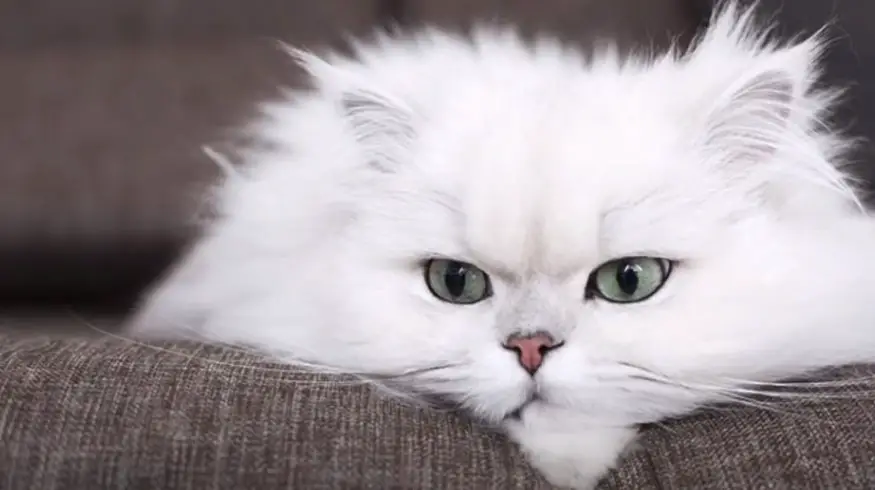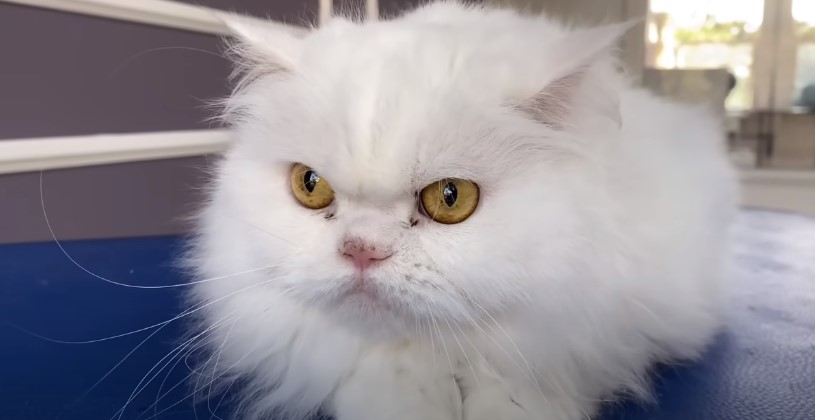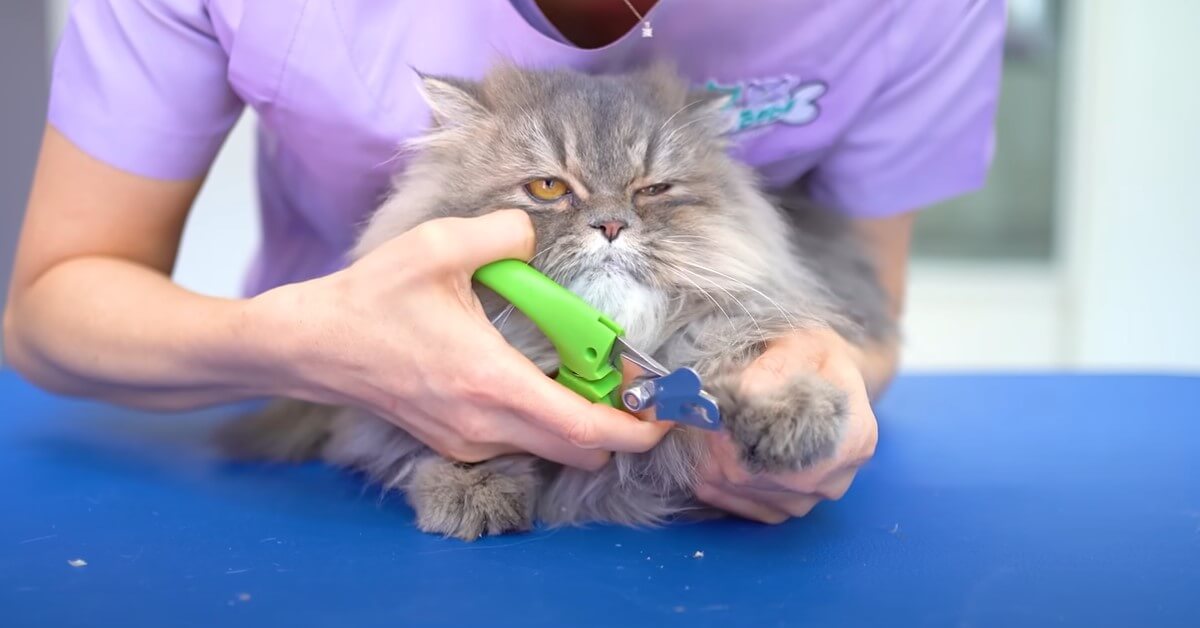To care for a long-haired cat, regularly brush its fur and manage shedding. Maintain a clean environment to prevent matting and tangling.
Caring for a long-haired cat requires diligence and patience, ensuring both the beauty and health of your feline friend. Regular grooming sessions become a cornerstone of this care, as they not only prevent the development of painful mats and tangles but also foster a bond between you and your pet.
Must follow these points to take care of long-haired cat:
- Regular grooming to prevent matting.
- Provide a balanced diet for coat health.
- Monitor for hairballs and address as needed.
- Keep the environment clean to reduce shedding.
- Check for matting around sensitive areas like ears.
- Regular vet visits for overall health assessment.
Your Guide to Long Haired Cat Care
Caring for a long haired cat brings with it a unique set of responsibilities that go above and beyond those of their short-haired counterparts. Luxurious and beautiful, long-haired breeds such as Persians, Maine Coons, and Siberians, require a focused grooming regimen, attention to diet, and regular health check-ups to maintain their well-being.
Whether you’re a seasoned cat owner or considering adopting a fluffy companion, understanding the nuances of long haired cat care is essential to ensure a happy, healthy life for your pet.

Understanding The Specific Needs Of Long Haired Cats
Long haired cats are not just visually stunning; they possess a distinct personality and demand careful attention to detail when it comes to their care.
Their lengthy coats can easily become tangled or matted, which not only leads to discomfort but can also lead to skin issues or infections.
Nutrition plays a pivotal role, as a proper diet can support coat health, reduce shedding, and even prevent hairballs. Recognizing these particular needs is the first step in becoming an adept long haired cat caretaker.
The Importance Of Regular Grooming
Regular grooming is not just about keeping your cat looking their best; it’s a fundamental component of their overall health and happiness. Grooming sessions should be as routine as feeding and provide an opportunity to fortify the bond between you and your furry friend. Brushing, bathing, trimming, and ear cleaning are all grooming tasks that shouldn’t be overlooked.
Through consistent grooming practices, long-haired cat owners can help prevent painful mats, detect early signs of health issues, and reduce the amount of hair ingested during self-grooming, which can lead to hairballs.
Basics Of Daily Maintenance
Welcome to the essentials of “Basics of Daily Maintenance” for your long-haired feline friend. Ensuring the health and well-being of a long-haired cat involves attention to detail and a gentle touch.
Regular grooming not only keeps your cat looking their best, but also helps to prevent common issues like mats, hairballs, and excess shedding. Let’s delve into the daily rituals that will make maintenance a bonding experience for you and your cat.
Proper Brushing Techniques For Long Fur
A long haired cat’s coat requires regular and meticulous brushing to stay tangle-free and shiny. Here are some steps to perfect your technique:
- Choose the right brush. A wide-toothed comb or pin brush works well for detangling without pulling the skin.
- Start at the head and move towards the tail. Gently brush in the direction of the fur growth.
- To prevent matting, tackle the common problem areas such as behind the ears, under the arms, and around the collar.
- Be gentle. If you hit a mat or tangle, use your fingers to tease it apart before attempting to brush through it.
Managing Shedding And Preventing Hairballs
Managing your cat’s shedding helps reduce the risk of hairball formation. Here’s how:
- Increase brushing frequency during peak shedding seasons, typically spring and fall.
- Consider a specialized de-shedding tool to remove loose fur efficiently.
- Introduce hairball prevention diets or supplements as recommended by your vet.
- Keep your cat hydrated. A water fountain can encourage more frequent drinking.
Keeping Eyes, Ears, And Claws Clean
Along with fur care, maintaining your cat’s eyes, ears, and claws is important:
| Area | Maintenance Tips |
|---|---|
| Eyes | Wipe away any discharge with a soft, damp cloth. Use a separate area of the cloth for each eye. |
| Ears | Check for dirt and wax buildup weekly. Clean with a vet-approved ear cleaner if necessary. |
| Claws | Trim claws regularly to prevent overgrowth and splitting. Invest in a quality nail clipper designed for cats. |
Careful maintenance is key to a healthy and happy cat. With regular grooming, diet consideration, and periodic health checks, your long-haired companion will thrive, contributing to a purr-fect relationship between you and your beloved pet.

Advanced Grooming And Health Considerations
Advanced Grooming and Health Considerations are vital in maintaining the majestic appearance and overall well-being of your long-haired cat. Proper grooming goes beyond just keeping your cat looking good – it prevents skin irritation, reduces hairballs, and strengthens the bond between you and your pet.
A healthy coat is the mirror of a cat’s internal and external health. Uncover the essentials in grooming and health practices that will keep your feline friend’s fur lustrous and its body thriving.
Choosing The Right Grooming Tools And Products
Optimal grooming starts with the selection of appropriate tools and products specifically designed for long-haired cats. These include:
- Pinch-bristle brushes: These brushes effectively remove loose fur and help in detangling.
- Wide-toothed combs: Essential for gently working through knots without pulling the skin.
- Metal slicker brushes: Ideal for smoothing the coat and adding shine.
- Grooming clippers: Useful for carefully trimming around sensitive areas if necessary.
- Hypoallergenic shampoos: A shampoo designed for long-haired breeds keeps the skin hydrated and coat soft.
- Detangling sprays: To ease the brushing process and prevent breakage.
Keep in mind, quality products reduce the risk of irritation and make the grooming experience enjoyable for your cat.
Read: How to Control Cat Hair in House
Bathing Your Long Haired Cat: When And How
Although not often necessary, there are times when bathing your long-haired cat becomes essential for removing dirt and grease. Follow these steps:
- Prepare in advance: Gather all tools and ensure the water is lukewarm.
- Gentle approach: Ease your cat into the water and slowly wet its coat.
- Shampoo application: Use small amounts of cat-specific shampoo and massage gently.
- Rinse thoroughly: Ensure no shampoo residue remains as it can irritate the skin.
- Comforting dry-off: Use a soft towel or low-heat hair dryer to fully dry their fur.
Regular bathing may not be necessary, but periodic cleaning can prevent dirt build-up in the coat.
Recognizing And Dealing With Matting
Matting can be a serious issue for long-haired cats, leading to discomfort and skin issues. Early detection and proper handling are key. Here’s what to do when you encounter matted fur:
- Regular inspection: Frequently check for mats, particularly in areas with friction like underarms.
- Detangling: Carefully use a wide-toothed comb to loosen mats. If mats persist, consider seeking professional help.
- Avoid cutting: Unless absolutely necessary and with extreme caution, as there’s a risk of cutting the skin.
Remember, consistent grooming is the best preventative measure against matting.
Diet And Nutrition For A Healthy Coat
Diet influences coat health directly. For your long-haired cat, nutrition that supports coat health should include:
- High-quality protein: Facilitates the growth of healthy fur.
- Omega-3 and -6 fatty acids: Promote skin health and shine.
- Vitamins and minerals: Essential nutrients like zinc and vitamin E support coat vigor.
Ensure your cat’s food meets AFFCO standards for a balanced diet that supports skin and coat health.
Coping With Common Long Haired Cat Issues
Falling for the allure of a long-haired cat’s luscious fur can be easy, but their beautiful locks require commitment and care. These majestic creatures may face issues distinct to their fine coats.
Understanding and addressing these challenges is the key to a happy, healthy feline companion. Let’s explore some effective tactics and professional insights to keep those flowing whiskers in purr-fect condition.
Strategies To Deal With Tangled Fur
Maintenance is paramount for owners of long-haired cats. Tangles and mats can swiftly transform a luxurious coat into a knotted mess. Below are trusted strategies to keep your feline friend’s fur smooth and silky:
- Daily brushing: Regularly run a comb or brush through your cat’s fur. A de-matting tool is essential for preventing severe knots.
- Particular attention: Pay extra attention to areas prone to matting, such as under the arms, behind the ears, and under the collar.
- Mat removal: Small mats can often be gently teased apart, but if they persist, consider seeking professional help.
Professional Grooming Services: When To Consider
Sometimes, a professional touch is needed. Here are scenarios that merit a trip to the groomer:
- Persistent mats that defy your efforts at home.
- Your cat is uncooperative, and grooming sessions become stressful.
- The coat requires a trim to manage the length or for hygienic reasons, such as around the hindquarters.
Professional groomers not only detangle fur but also provide services like bathing, which can be a Herculean task for an owner. They are adept at handling feline temperaments, ensuring a safe and stress-free experience.
Health Concerns Specific To Long Haired Breeds
Long-haired cats aren’t just potential show-stoppers; they have some health quirks too.
| Health Issue | Description | Prevention/Treatment |
|---|---|---|
| Hairballs | Accumulated fur ingested during grooming. | Regular brushing and specialized diets can minimize hairball formation. |
| Skin conditions | Hidden skin issues beneath the dense fur. | Inspect skin during grooming; consult a vet promptly if abnormalities are found. |
| Overheating | Thick fur can lead to increased body temperature. | Keep your cat cool, well-hydrated, and in a climate-controlled environment during hot weather. |
Being vigilant and proactive with grooming and health checks can preempt many issues. A trusting relationship with your cat eases the rigors of grooming and healthcare routines, leading to a flourishing partnership.
Read: What Will Happen if I Swallowed Cat Hair?
Beyond Grooming: Overall Well-being
Welcome to the comprehensive guide for enhancing the overall well-being of your long-haired cat companion. Caring for these majestic creatures extends beyond the grooming brush; it encapsulates every facet of their lives.
Ensuring your feline friend’s happiness and health transcends mere aesthetics—it’s about nurturing their physical, mental, and emotional balance.
Let’s delve into creating the perfect habitat, promoting physical activity, and stimulating their keen minds to maintain a splendid, lustrous coat as a reflection of their inner vitality.
Creating A Cat-friendly Environment
Long-haired cats flourish in environments that cater to their instinctual and lifestyle needs. A comfortable, stimulating, and safe space encourages your cat’s well-being and by extension, maintains the health of their coat.
- Climbing structures like cat trees or wall shelves to fulfill their climbing instincts and provide a vantage point.
- Scratching posts to help manage claw health, reducing the risk of snags in their fur.
- Soft bedding for rest and quiet zones where they can retreat and relax.
The Role Of Exercise And Play In Coat Health
Believe it or not, your long-haired cat’s luxurious coat benefits tremendously from regular exercise and play. Active movement stimulates blood circulation, which nourishes skin and fur.
Additionally, the act of playing can help reduce stress-induced behaviors that might lead to overgrooming or neglect of their coat.
Integrating activities into your pet’s routine is simple:
- Incorporate play sessions using interactive toys that mimic prey movements, like feathers on a string or laser pointers, to engage your cat’s hunting instincts.
- Consider puzzle feeders to make mealtime a more active, engaging affair that can help manage weight.
- Encourage self-directed play with a variety of toys that your cat can enjoy even when you’re not around.
Ensuring Mental Health Through Enrichment Activities
Mental stimulation is a cornerstone of cat health. A long-haired cat’s luxurious coat serves as a barometer for their mental state; a dull or unkempt appearance may indicate stress or boredom. Enrichment activities that challenge their senses and intellect can prevent these issues.
Try the following to bolster mental health:
- Introduce new toys regularly to keep their environment novel and interesting.
- Invest in catnip plants or toys, which can provide sensory enrichment and occasional healthy excitement.
- Training sessions teach tricks or commands that can stimulate their mind and strengthen your bond.
FAQs
Are Long-haired Cats Hard To Take Care Of?
Long-haired cats require regular grooming to prevent matting and reduce shedding. They often need daily brushing and occasional professional grooming, which can be time-consuming.
How Do You Deal With A Long-haired Cat?
Caring for a long-haired cat involves regular grooming. Brush its coat daily to prevent mats and tangles. Use a vet-recommended shampoo for occasional baths. Maintain a healthy diet to reduce shedding. Keep your pet hydrated, and provide routine veterinary checkups.
Do Long-haired Cats Need Haircuts?
Long-haired cats may need regular trims to prevent matting and maintain coat health, especially in breeds with exceptionally dense fur. Regular grooming can help manage their coat without full haircuts.
How Often Should Long-haired Cats Be Bathed?
Long-haired cats typically need a bath every 4-6 weeks to maintain healthy skin and fur. Regular grooming is also essential.
Conclusion
Caring for your long-haired feline friend takes dedication, but the rewards are worth it. Gently grooming, regular vet checks, and proper nutrition keep their coat luscious. Your cat will thank you with purrs and affection. Embrace the routine and watch your furry companion thrive in health and beauty.
His professional interests include humane education, ethics, small animal behavior, and veterinary. As a pet lover from school life, having grown up with two cats and a dog. If he isn’t spending time with his friends and family, Justin enjoys traveling. Learn more about Justin here.

